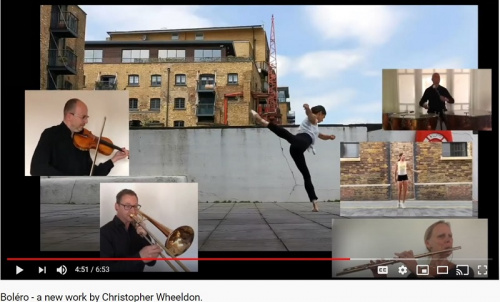BOLÈRO
16/06/2020 - 31/07/2020
COVID-19 Lockdown Festival 2020
Production Details
Christopher Wheeldon collaborated with the dancers of The Royal Ballet and musicians from The Royal Opéra House Orchestra while in isolation for Covid 19 to produce a new version of his ballet Bolèro.
The iconic music by Maurice Ravel fuels this work celebrating togetherness in a complex time of isolation. Let the power of art help to begin the healing.
Opening: 16 June 2020 (no end date – is available on You Tube)
https://www.youtube.com/watch?v=BL8I11GsM7U
Webcast , Dance , ,
6 min 53 secs
A whirlwind of different layers
Review by Caitlin Halmarick 18th Jun 2020
With the self-isolating regulations of Covid-19 many dance companies, choreographers, and dancers have taken to social media and online platforms to continue developing and presenting their works. Now, three months after many countries initial lockdowns we are seeing the results of many of these projects undertaken during this time.
Christopher Wheeldon, Artistic Associate of The Royal Ballet, along with dancers of The Royal Ballet and musicians from The Royal Opera House, has created Boléro, a short dance film edited by Paul McGill. “Recorded remotely on smart phones by the individual artists you will see and hear” the film truly is a testament to the resilience of artists to keep working and creating in unprecedented and trying times, and a shining example of perhaps how dance can grow into a technologically rich 21st-century method of work and presentation, and even a new business model.
First, I would like to congratulate Christopher Wheeldon on the management of a project that is yet to be fully explored in the dance industry. Choreographing a dance, managing dancers, coordinating the collaboration with musicians, and all other tasks involved in choreography is already a demanding job. To then be able to translate this choreographic vision to a technological realm that involves the coordination of artists over online platforms, the vision of how choreography is translated into filmed frames, the location and dress of artists within a themed continuity, and how each element of music and dance will come together in a time precise environment is the cutting edge of the development of dance today. Boléro successfully undertakes all these elements and presents a film that is engaging and exciting, and yet does not stray too far in how we traditionally experience dance performance.
Dance film presented over social media allows choreographers and artists to explore unique elements that only this form can bring. Dance film enables more intimate frames and emphasis on specific movements or sections of the body, details that can often be glanced over in a live theatre setting, yet often lift a dance from ordinary to exquisite. This medium of dance film has been explored in the past yet was often then presented in a live theatre environment. The current forced presentation of dance through online mediums and social media presents yet another exciting change to dance.
In the first 8 hours that Boléro has been live on Christopher Wheeldon’s Instagram, there have been over 8,000 views and 160 comments, not to mention all the other views on accounts who have reposted the film. Is this the answer classical dance companies have been looking for regarding new audience engagement? I believe now is the time for companies to have a long hard look at how they want to engage with their audiences, the value the current generation places on transparency, relatability, and easy access, and how companies will be able to stay afloat in these trying times through engaging with this new medium.
The medium of dance film requires a good editor, and Paul McGill delivers some spectacular work in Boléro. What could have been a very straight forward recording of dancers and musicians working through the piece from point A to B is instead a whirlwind of different layers of artists moving in different angles, frames, direction, and timing to create a piece that has all the hallmarks of sophisticated choreography yet with the added elements of the sudden introduction and disappearance of artists in layered frames all exploring the same choreography each in their own setting. Boléro truly is a case study on how dance film presented on social media can be explored.
I look forward to the day where companies embrace this new medium of dance and engage a younger audience that can carry them into the 21st century. That isn’t to say that traditional live theatre should be forgotten, but instead may be considered one element of a dance form that is moving with the times and aware of the responsibility they hold to be a part of the cultural narrative.
Copyright © in the review belongs to the reviewer





Comments